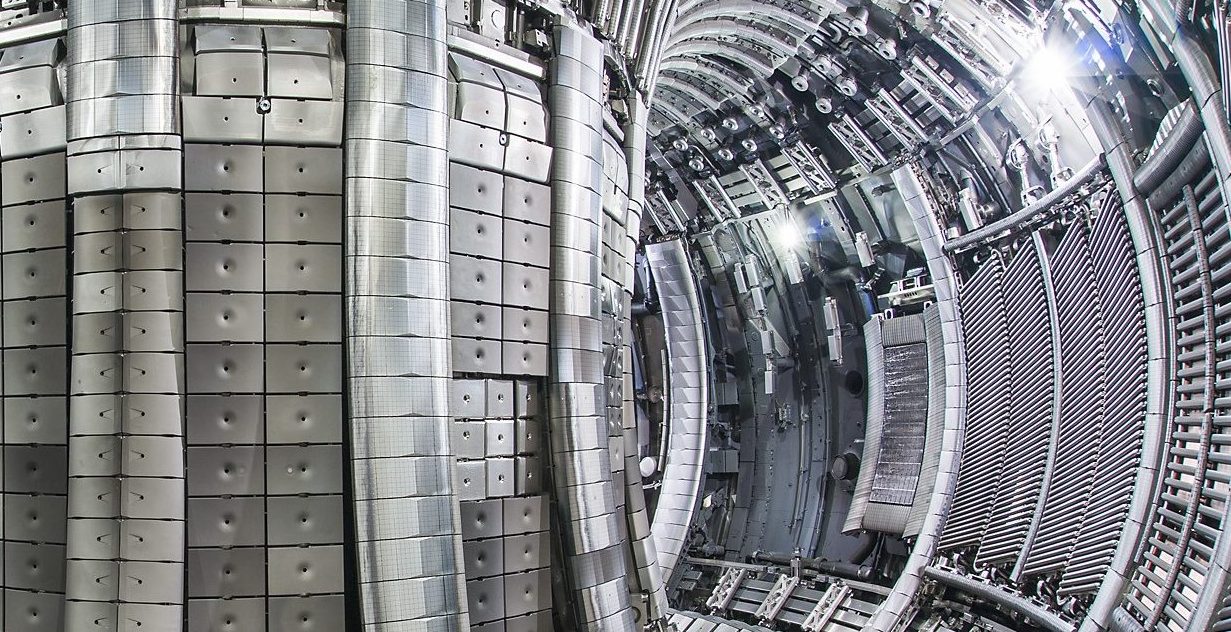
The paper entitled “Modelling of JET hybrid plasmas with emphasis on performance of combined ICRF and NBI heating” has been published by Nuclear Fusion. It advances our understanding of the optimisation of fusion performance of the recent Joint European Torus (JET) hybrid plasmas. The hybrid scenario is an advanced regime of tokamak plasma operation expected to be applied in ITER. It is characterized by a low plasma current Ip which allows operation at a high normalised beta as well as a safety factor at the plasma centre greater than 1 which is beneficial from the plasma stability point of view.
The paper focuses on the impact of neutral beam injection (NBI) and specially ion cyclotron resonance frequency (ICRF) heating on the neutron production rate. The main scheme studied is minority hydrogen (H) in a deuterium (D) plasma with D beams. The modelling takes into account the synergy between ICRF and NBI heating through the second harmonic cyclotron resonance of D beam ions which allows us to assess its impact on the neutron rate RNT. Apart from the D scenario, the deuterium-tritium (DT) scenario is also assessed through an extrapolation of D high-performance hybrid discharges. These results are relevant for the forthcoming DTE2 campaign at JET where one of the goals is to achieve the highest possible fusion performance for a duration of more than 5 s.
The experimental and modelling results have allowed us to draw several important conclusions regarding the fusion plasma performance. Some of the main results are listed here; for a more comprehensive explanation please refer to the original published paper.
- Lower concentrations of H help to channel the ICRF heating power to D ions which results in a stronger tail in the velocity distribution of D ions effectively increasing the neutron rate since the cross section of D-D fusion reactions peak at the MeV range. This effect can boost the number of fusion reactions up to 20%.
- For a high-performance hybrid discharge, the ICRF fusion enhancement reaches a value of ~35% during the ramp-up while it becomes steady at around 15% when the NBI power output and plasma density become maximum.
- The effect of the resonance position of ICRF heating is also assessed. Higher direct electron damping is obtained with resonances at the high field side while more ion heating is obtained with resonances positioned centrally and at the low-field side. The main observation is the appearance of impurity accumulation and MHD activity for those discharges with ICRF resonance position 15cm or further away from the magnetic axis.
- Prediction to DT scenario is carried out highlighting differences with the DD scenario and comparing between two minority species, H and 3-helium (3He). A remarkable result is that ICRF enhancement is predicted to be positive under these conditions and therefore should not affect the neutron production rate by driving D or T fast ions beyond the DT fusion cross section optimal energy which stands around 120 keV.
These results will help improve the fusion plasma performance and, hopefully, boost the plasma performance in the forthcoming DTE2 campaign at JET.
